In times of uncertainty, the power of prayer can bring comfort, unity, and divine intervention.…
St Patrick and What We Can Learn From The Celtic Christian Faith
Some you might remember, in 2020, Bill and I took a DNA ancestry test and discovered we are VERY Irish (and we also knew we were Scottish). This got me interested in the Celtic Christian faith. My friend, and mentee, Rebecca Friedlander is a film maker, author, and professor of Celtic studies, so I took her course and gained a great admiration for the christian faith of the Celts! For example, history indicates the disciples of John the disciple are the ones who first brought the faith to Ireland and Scotland. I also learned about the “Thin Places” or practices and places of prayer in Celtic Christianity. I asked Rebecca to share a short blog, in honor of St Patrick’s Day– with a little about Patrick.
VERY Irish (and we also knew we were Scottish). This got me interested in the Celtic Christian faith. My friend, and mentee, Rebecca Friedlander is a film maker, author, and professor of Celtic studies, so I took her course and gained a great admiration for the christian faith of the Celts! For example, history indicates the disciples of John the disciple are the ones who first brought the faith to Ireland and Scotland. I also learned about the “Thin Places” or practices and places of prayer in Celtic Christianity. I asked Rebecca to share a short blog, in honor of St Patrick’s Day– with a little about Patrick.
As we approach St. Patrick’s Day, we’re reminded why this special time holds a deep meaning for followers of Christ: it’s a peephole into an incredible time of Christian history with fabulous adventures and timeless truths. I fell in love with these stories while creating Celtic Pilgrimage, a docudrama which covers 400-665 AD, the Golden Age of Celtic Christianity in Ireland, Scotland, and England. This led to more fantastic adventures while creating several films and even earning a masters degree in Celtic Studies. It’s well worth taking a “personal pilgrimage” into this history!
Many pilgrims who cross paths with the Celtic way stumble upon something strangely familiar, like a wonderful secret you always knew but didn’t quite have words to explain. Far from men and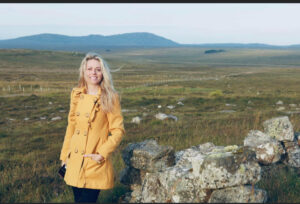 women who walked beneath shining halos perched in untouchable stained glass cathedrals, the historical accounts of these saints reveal tears, disappointments, betrayal, and mistakes. Yet the stories also sound like a continuation of the Book of Acts, with miraculous healing, the dead raised to life, prophetic dreams, angelic visitations, and entire nations turning to Christ.
women who walked beneath shining halos perched in untouchable stained glass cathedrals, the historical accounts of these saints reveal tears, disappointments, betrayal, and mistakes. Yet the stories also sound like a continuation of the Book of Acts, with miraculous healing, the dead raised to life, prophetic dreams, angelic visitations, and entire nations turning to Christ.
For the Celts, Christianity was more than theology- it was a way of life filled with the power of the Holy Spirit, and yet their lives were so rich with kindness that you come to consider them almost personal friends.
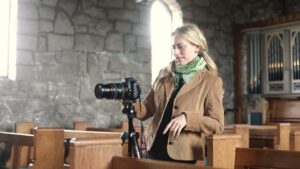 Some of my favorite stories take us deep into the mystery of how the ancient saints cultivated this life of prayer. Some legends are possibly historically inaccurate but still teach us powerful lessons, like the tale of St. Kevin who stood with arms outstretched in prayer long enough for a bird to build a nest, lay an egg, and hatch her young in his hand. To the skeptic, this story sounds ludicrous. To the seeker, it reminds us that time patiently invested in prayer makes us a safe haven for others. When was the last time we spent enough extravagant time with God for anything from heaven to rest on us? It causes us to ask searching questions and ponder the heart cry of Christ, Could you not watch one hour with Me?[1] For the Celtic saints, the quest for intimacy with the Lord was so intense, that they built their lives around this journey.
Some of my favorite stories take us deep into the mystery of how the ancient saints cultivated this life of prayer. Some legends are possibly historically inaccurate but still teach us powerful lessons, like the tale of St. Kevin who stood with arms outstretched in prayer long enough for a bird to build a nest, lay an egg, and hatch her young in his hand. To the skeptic, this story sounds ludicrous. To the seeker, it reminds us that time patiently invested in prayer makes us a safe haven for others. When was the last time we spent enough extravagant time with God for anything from heaven to rest on us? It causes us to ask searching questions and ponder the heart cry of Christ, Could you not watch one hour with Me?[1] For the Celtic saints, the quest for intimacy with the Lord was so intense, that they built their lives around this journey.
Instead of becoming irrelevant to their society, the saints emerged from the secret place of prayer with power to change nations. Kings and leaders came to them for advice, and communities built by these seekers became powerful universities that kept learning and literacy alive during the Dark Ages. The Celtic leaders did more than just consider prayer a good idea; prayer was a lifestyle, and from this place of intimacy with God, they changed the world.
St. Patrick’s life abounds with myths and legends, but if we delve into his personal writings, we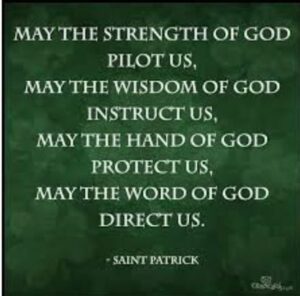 discover how an unexpected turn in his life resulted in a powerful prayer warrior. These writings have been preserved through history and are known as “Patrick’s Confession [of faith].” A few minutes of time result in a rich discovery of how prayer brought incredible breakthrough to Patrick, even as a young man.
discover how an unexpected turn in his life resulted in a powerful prayer warrior. These writings have been preserved through history and are known as “Patrick’s Confession [of faith].” A few minutes of time result in a rich discovery of how prayer brought incredible breakthrough to Patrick, even as a young man.
Patrick’s Story
It was an era of outlaws, rebels, and renegade pirates who cast dark shadows of fear over the territory of Britannia, now known as England and Whales. Around 400 AD, the Roman Empire that had offered protection and civil defense against neighboring invaders, suddenly withdrew all troops from the region as their government collapsed with a crash that shook all of Europe. Helpless to protect themselves from neighboring enemies without the Roman army, the land fell prey to pirates who sailed from the dark land of Ireland.
Patrick was sixteen years old when he lived on the coast, and not very interested in the things of God. His father and grandfather were both leaders in the church, and possibly his mother was the niece of Martin of Tours, the pioneer of a great spiritual movement in France. However, this teenager in middle class society was uninterested.
 Strolling along the coast one day, Patrick stumbled into a nightmare that plunged his life into anguish, abuse, and ultimately the thrilling joy of discovering Christ. Irish pirates surrounded and seized the young man, violently throwing him into their boat and rowing for the bitter West. Stunned, Patrick had no time to kiss his mother goodbye or bring anything from home. In numb agony he stood before an Irish tribal king, bruised and bound with chains, listening to the crude coins that fell from his master’s hands into the pirate’s greedy grasp. Still a teenager, he was sent to keep the king’s sheep on a wilderness mountain. Slave trafficked and clueless among odd Gaelic tongues, Patrick began his new life in the bitter elements of Ireland, dubbed Hibernia, the land of winter. Somewhere along the way, like the shepherd boy David among the bleating sheep and lonely nights, he turned to God.
Strolling along the coast one day, Patrick stumbled into a nightmare that plunged his life into anguish, abuse, and ultimately the thrilling joy of discovering Christ. Irish pirates surrounded and seized the young man, violently throwing him into their boat and rowing for the bitter West. Stunned, Patrick had no time to kiss his mother goodbye or bring anything from home. In numb agony he stood before an Irish tribal king, bruised and bound with chains, listening to the crude coins that fell from his master’s hands into the pirate’s greedy grasp. Still a teenager, he was sent to keep the king’s sheep on a wilderness mountain. Slave trafficked and clueless among odd Gaelic tongues, Patrick began his new life in the bitter elements of Ireland, dubbed Hibernia, the land of winter. Somewhere along the way, like the shepherd boy David among the bleating sheep and lonely nights, he turned to God.
Patrick later wrote of those memories, his pen thoughtfully recalling the sacred moments:
After I arrived in Ireland, I tended sheep every day, and I prayed frequently during the day. More and more the love of God increased, and my sense of awe before God. Faith grew, and my spirit was moved, so that in one day I would pray up to one hundred times, and at night perhaps the same.
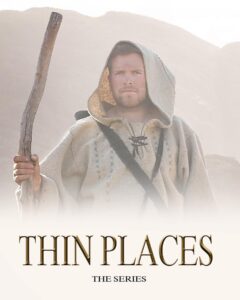 I even remained in the woods and on the mountain, and I would rise to pray before dawn in snow and ice and rain. I never felt the worse for it, and I never felt lazy – as I realize now, the spirit was burning in me at that time.[1]
I even remained in the woods and on the mountain, and I would rise to pray before dawn in snow and ice and rain. I never felt the worse for it, and I never felt lazy – as I realize now, the spirit was burning in me at that time.[1]
Through the long nights of winter when the land froze and squeezed daylight out of the short days, Patrick’s whispered prayers caught the ear of heaven. With no father to comfort him, the Maker of the land began to wrap His arms around the young man and dry his tears. In fasting and prayer, Patrick began to seek the face of God.
It was there one night in my sleep that I heard a voice saying to me: “You have fasted well. Very soon you will return to your native country.” Again after a short while, I heard someone saying to me: “Look – your ship is ready.”
It was not nearby, but a good two hundred miles away. I had never been to the place, nor did I know anyone there. So I ran away then, and left the man with whom I had been for six years. It was in the strength of God that I went – God who turned the direction of my life to good; I feared nothing while I was on the journey to that ship.
At the age of twenty-two, Patrick simply left the sheep and started his two hundred mile walk to find the ship in his vision. His peers at home would have been pursuing their education and studying science, language, and art. Patrick’s education in the wilderness had given him different schooling- attention and devotion to the voice of God.
Patrick was among the first of many to birth a [Christian] movement in pagan Ireland. Grounded in prayer, this movement swept across Europe and even reached the shored of America in the Dark Ages. It’s a powerful reminder of how prayer reached the heart of God. Amazing things happen when God’s people cry out to him! Let’s remember this as we celebrate St. Patrick’s Day.
 Rebecca Friedlander has been in full-time ministry for over 18 years, ministering both locally and internationally using creative arts and music. She is an ordained minister with The Missions Church International, has authored 10 books, and her films and TV series have aired around the world on multiple television platforms. She has a BA in Christian Creative Arts, a master’s in Celtic Studies, and is a published author with Baker House Publishing.
Rebecca Friedlander has been in full-time ministry for over 18 years, ministering both locally and internationally using creative arts and music. She is an ordained minister with The Missions Church International, has authored 10 books, and her films and TV series have aired around the world on multiple television platforms. She has a BA in Christian Creative Arts, a master’s in Celtic Studies, and is a published author with Baker House Publishing.
More about Rebecca’s films, books, an d photography: rebeccafriedlander.com
Watch the Celtic films at: https://www.rebeccafriedlander.com/store.html
[1] All excerpts from this chapter are taken from St. Patrick’s Confession
[1] See Mark 14:37, 38

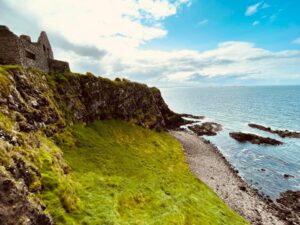
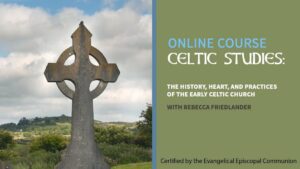
This Post Has 0 Comments